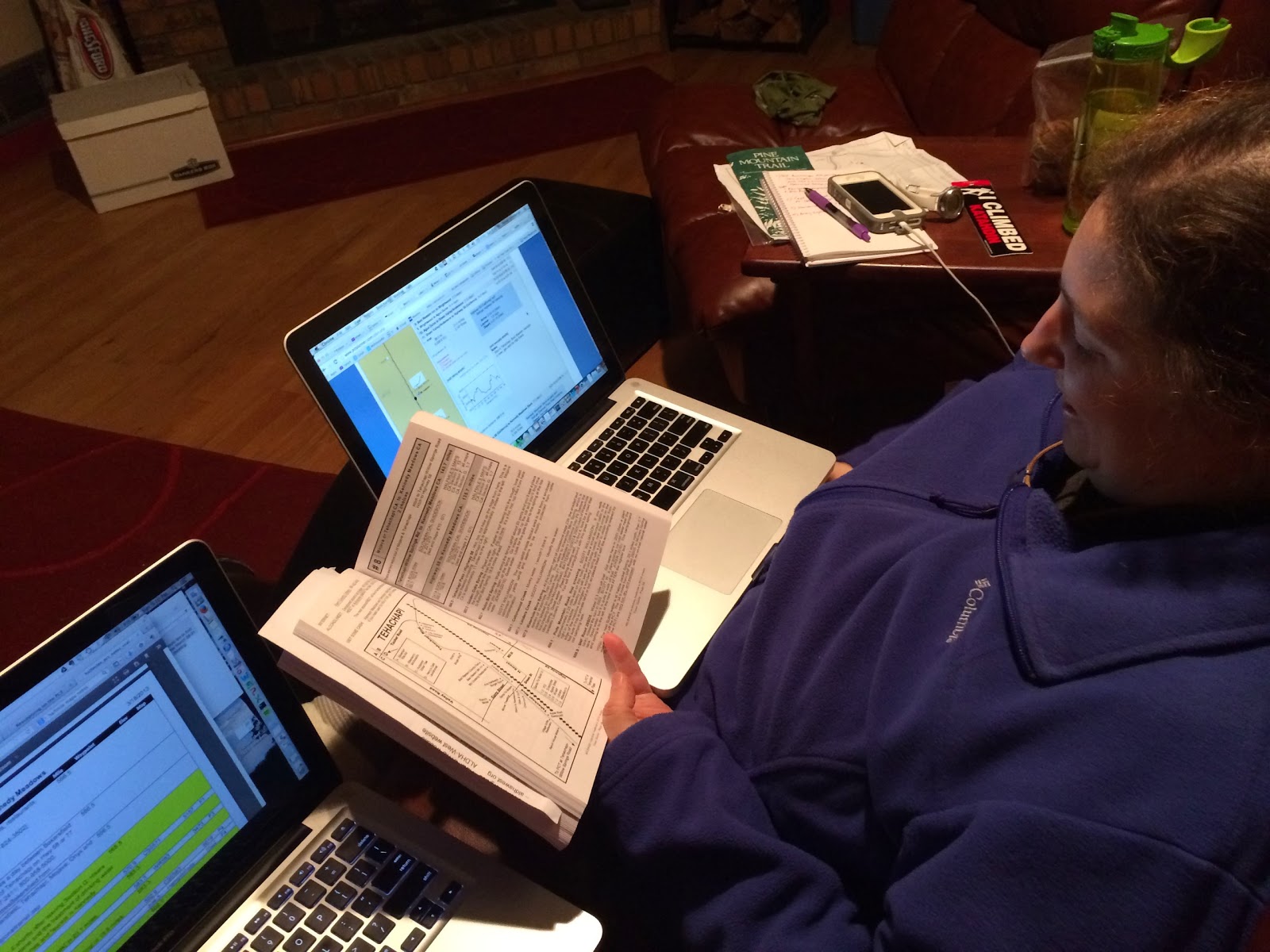Renee (Pathfinder) came down to Georgia over the holidays for another shakedown trip for
our Pacific Crest Trail thru hike (
our previous shakedown trip here). Neither of us had previously carried our bear canisters packed with 6-7 days of food, but we wanted practice for when we get into the Sierra. We were joined by Susan who is hiking the PCT as well (YAY!). Susan was the trip leader on my first backpacking trip with Sierra Club, is a fellow naturalist/ salamander hunter/ wildflower enthusiast, and is all-around AWESOME. I’m so thrilled the three of us will be starting our PCT adventures together in only 3 months!
 |
| Susan, me, and Renee/Pathfinder. |
Our route
This "practice” trip for the PCT, ironically enough, took us to the terminus of the Appalachian Trail (AT) in Georgia, starting at
Amicalola Falls State Park up to Springer Mountain (
with a visit with Hammock Forum friends- nice to see you guys!), and then north to Woody Gap. Due to winter weather, we then headed to lower elevations on the
Chattooga River Trail near the South Carolina/Georgia border to continue our trip (out and back between SC 28 and Sandy Ford Rd). (
Thanks again Kellye for the weather advisory and ride!!!!)
 |
| The Chattooga River near Dicks Creek Falls was plenty cold- it still got into the low 20's. |
Bear-can-love
One of our goals for this trip was to practice carrying bear canisters. I recently bought a bear canister (
BV500) for my PCT trip, and though I’ve been shlepping the bear canister around (
here and
here), this was the first time I’d tried packing it with six days of food plus the first day’s food outside the canister. While bear canisters are
required on certain parts of the PCT, using them in Georgia is quite uncommon, and they are only recently required here (i.e. on the AT near
Blood Mountain during thru hiker season).
 |
| Trying to get all the food into the canister. |
Adjusting to carrying the bear canister involved several steps- figuring out how to repackage and organize food in the can, and select more calorie-dense food, rearranging all my other gear in my backpack with the canister (
the bear can is bulky!), getting used to how the backpack feels on my back with the canister (
it’s very heavy!), and learning how to open the canister when it is cold (
use this card opener method). Learning these skills BEFORE I am out on the PCT will hopefully allow me to better enjoy being out there in the gorgeous scenery rather than fiddling (as much) with gear.
 |
| Reflective tape for finding the cans in the dark. |
I’m a total convert to the bear canister! It saves time not having to hang the food. With the short winter days, I don't have the frustration of throwing the bear line in the dark. While I’ve gotten much faster at hanging my food and never had critter problems, my food hangs have been less than textbook a few times- due to things like branches falling down, camping in pine forests with no reachable horizontal limbs, getting line stuck in the tree, or in dark/ rain/ dense fog. A bear can eliminates the time spent on bear-bagging misadventures. And most importantly, the bears (in the Sierra) won’t eat our food and then become problem bears- or dead bears.
 |
| Huddled under my tarp on the AT. Probably the only bear canisters and umbrellas around for miles. |
From gear angst to gear minutiae
You might recall that our first shakedown trip two months ago involved high levels of gear angst. We were worrying about changing our gear for the different conditions we anticipate on the PCT. We were struggling with the awkwardness of new gear (i.e. our packs, lighter shoes, electronics) and trying to be open-minded about change.
 |
| Playing around with our water systems. |
Two months later, we finally made it to the point where we decided to keep
the
gear we've loved on the AT (
making some adjustments of course), and we have largely transitioned to a new stage which we jokingly call "gear minutiae." Little trivial changes. We have most of our gear to start the PCT, and yet, we can't help but try to improve, streamline, and optimize. Cut an ounce here and there. Platypus big zip vs. hoser? In-line sawyer vs. sawyer squeeze? Icebreaker 200 vs. 260 weight long johns? Do I gotta get a new buff because my old AT buff would be totally dorky on the PCT? ... seriously... none of this minutiae will make or break our PCT experience. But it gives us somewhere to channel our ridiculously bubbling-over, out-of-control excitement.
Is it time to start hiking the PCT yet?
 |
| We're feeling (almost) ready. |
 |
| Obligatory photo of lovely, glimmering, tree foam! Woo hoo! |

































